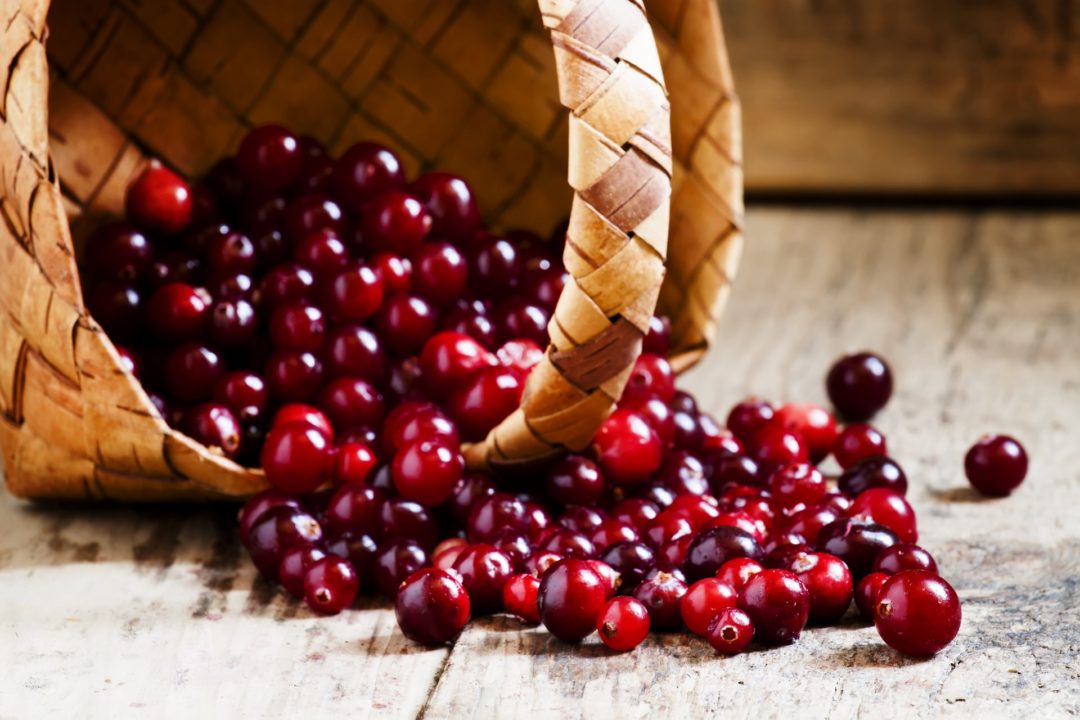It’s not peak cranberry season, but let’s not forget about these gems! Cranberries, or Vaccinium macrocarpon, are shrubs or vines that grow to about 2 meters in length and up to 20 centimeters high, and are indigenous to Asia and Northern America. For many centuries, cranberries have been used as a source of food and medicine. The cranberry itself is very high in antioxidants, most likely from the high level of proanthocyanidins. Many people search cranberry out because it is a great source of vitamin C, which is also a strong and effective antioxidant. It’s also well known and studied for its urinary health benefits.
Cranberries can be eaten as food source, enjoyed as a juice, used in liquid concentrate, or taken in a capsulated form. When I am asked about the best way to use cranberry to supplement the diet, I am sometimes hard-pressed to answer. I am a big believer in eating cranberries throughout the year, not just during the holidays, and I have personally searched out recipes to use them many different ways. I do take a cranberry supplement in capsule form, mostly because of the convenience, but also because although effective, the tartness of the concentrate and the natural 100% juice is personally hard for me to handle.
A common question I get regarding cranberries is about effectiveness. When someone tells me they are drinking a good amount of cranberry juice and not getting noticeable urinary tract benefits, my first question is: “What kind of juice are you drinking?” If the cranberry juice they have been drinking is sweet and refreshing, chances are it is loaded with sugar, sweeteners, or flavored with other sweetened juices—and it will not work. If it is bitter, tart and makes you pucker, that’s the good stuff! Remember to encourage customers to drink plenty of water, and keep the diet healthy and loaded with a variety of antioxidant-rich produce, including cranberries!










